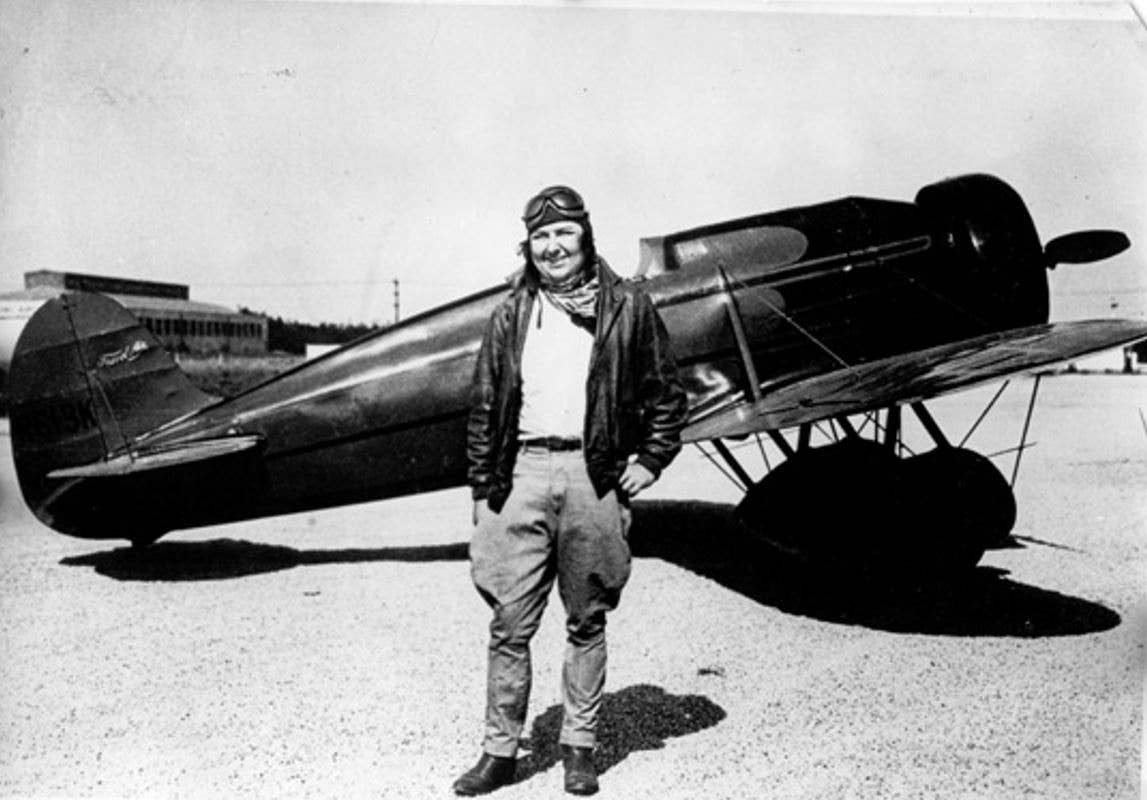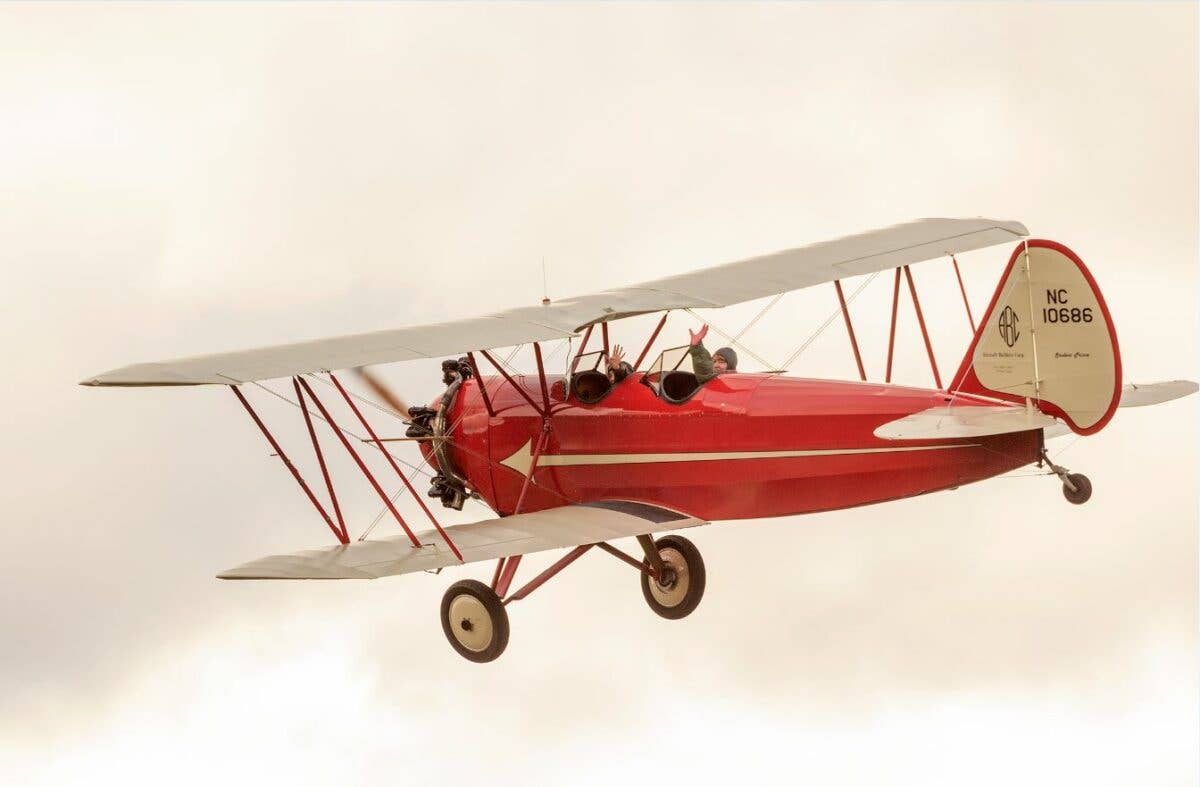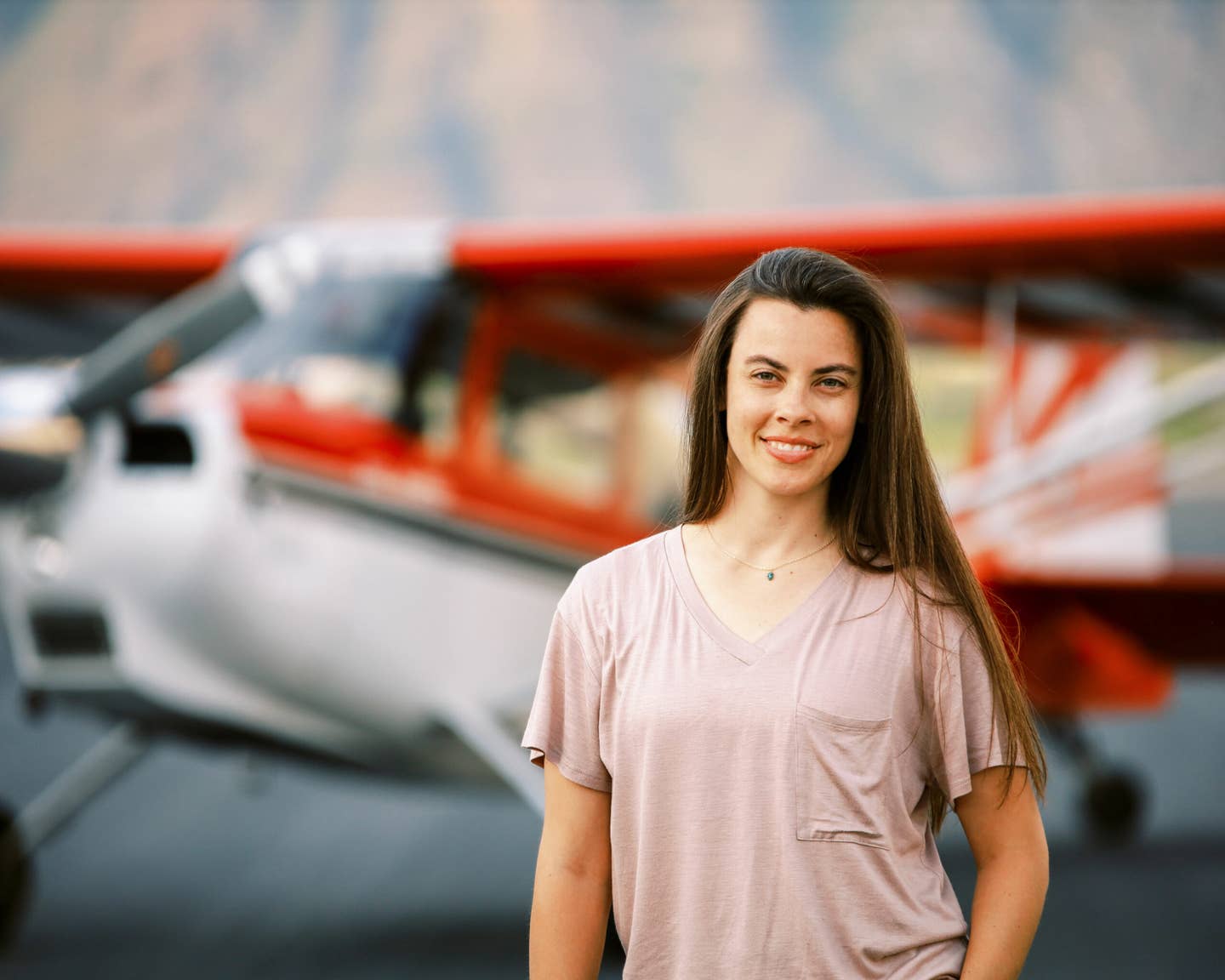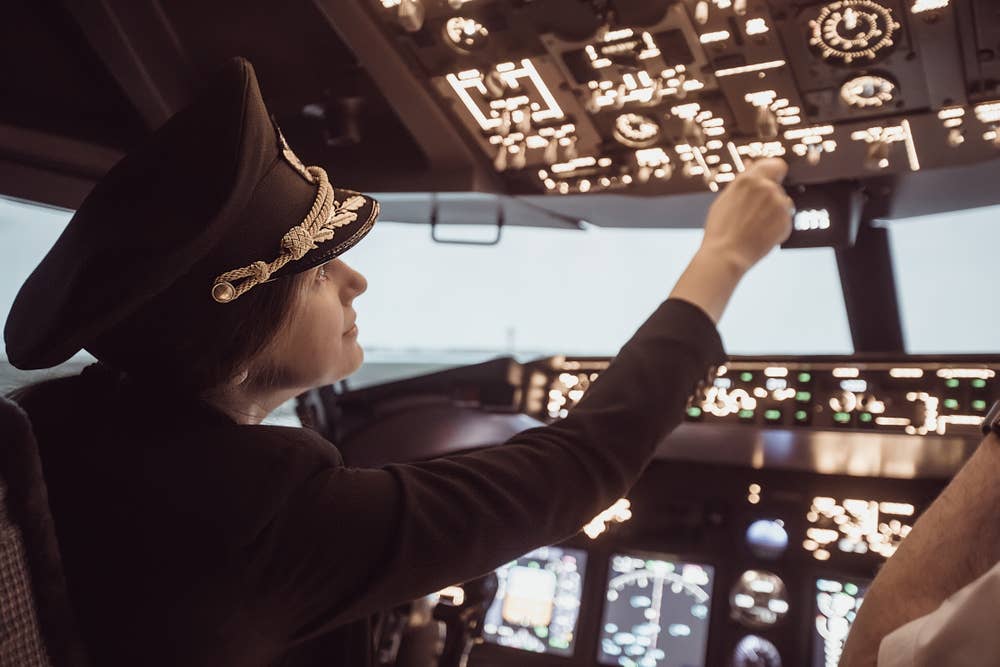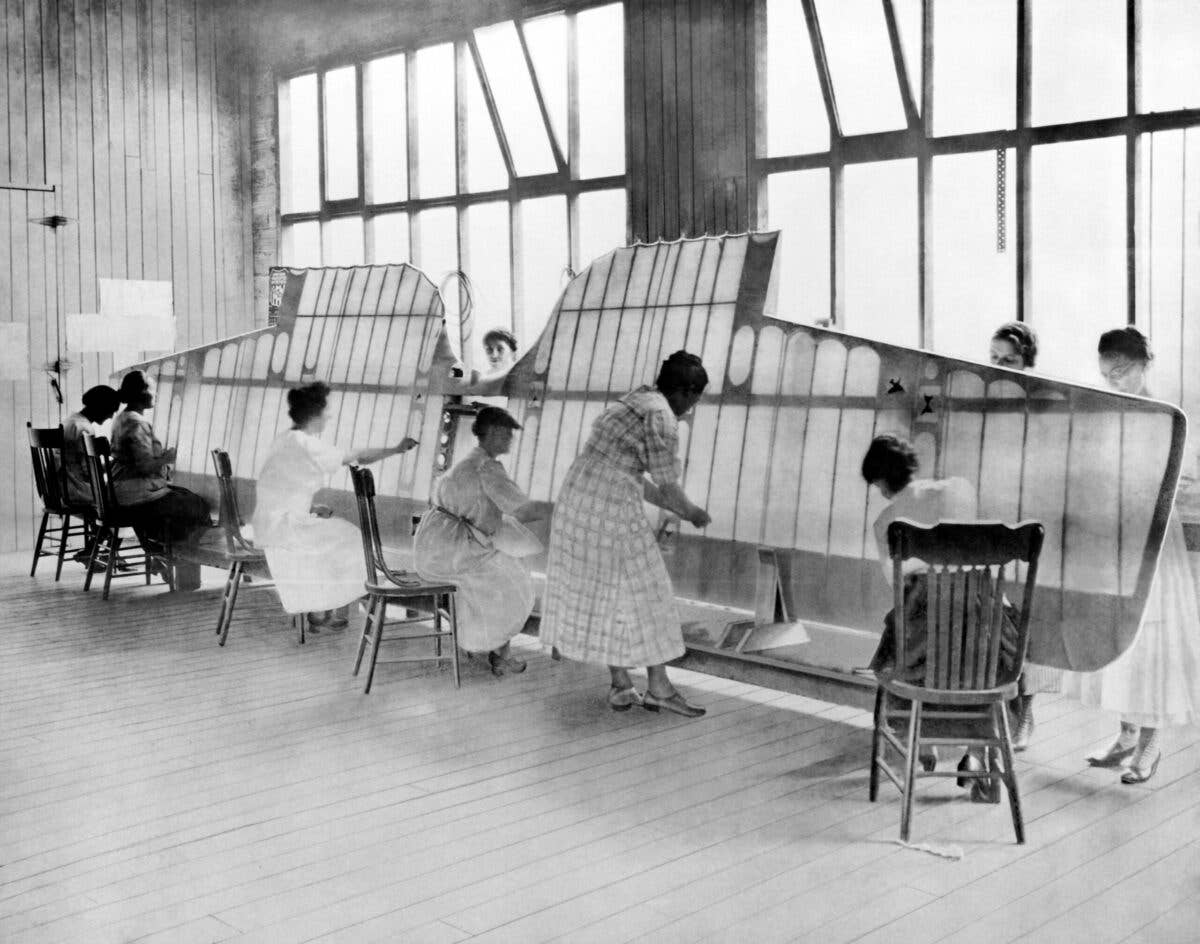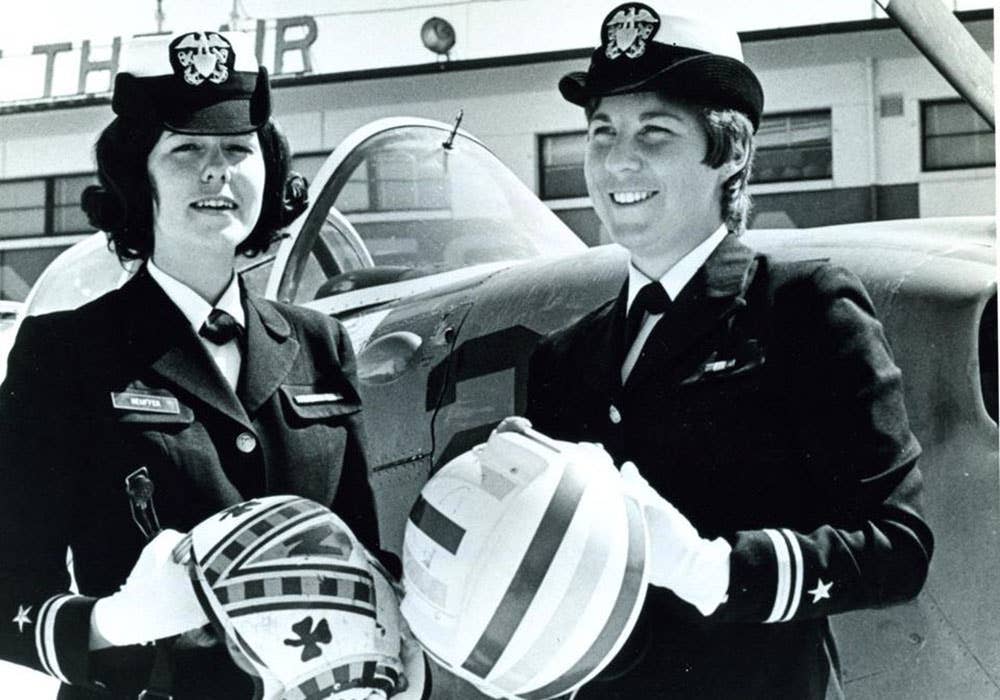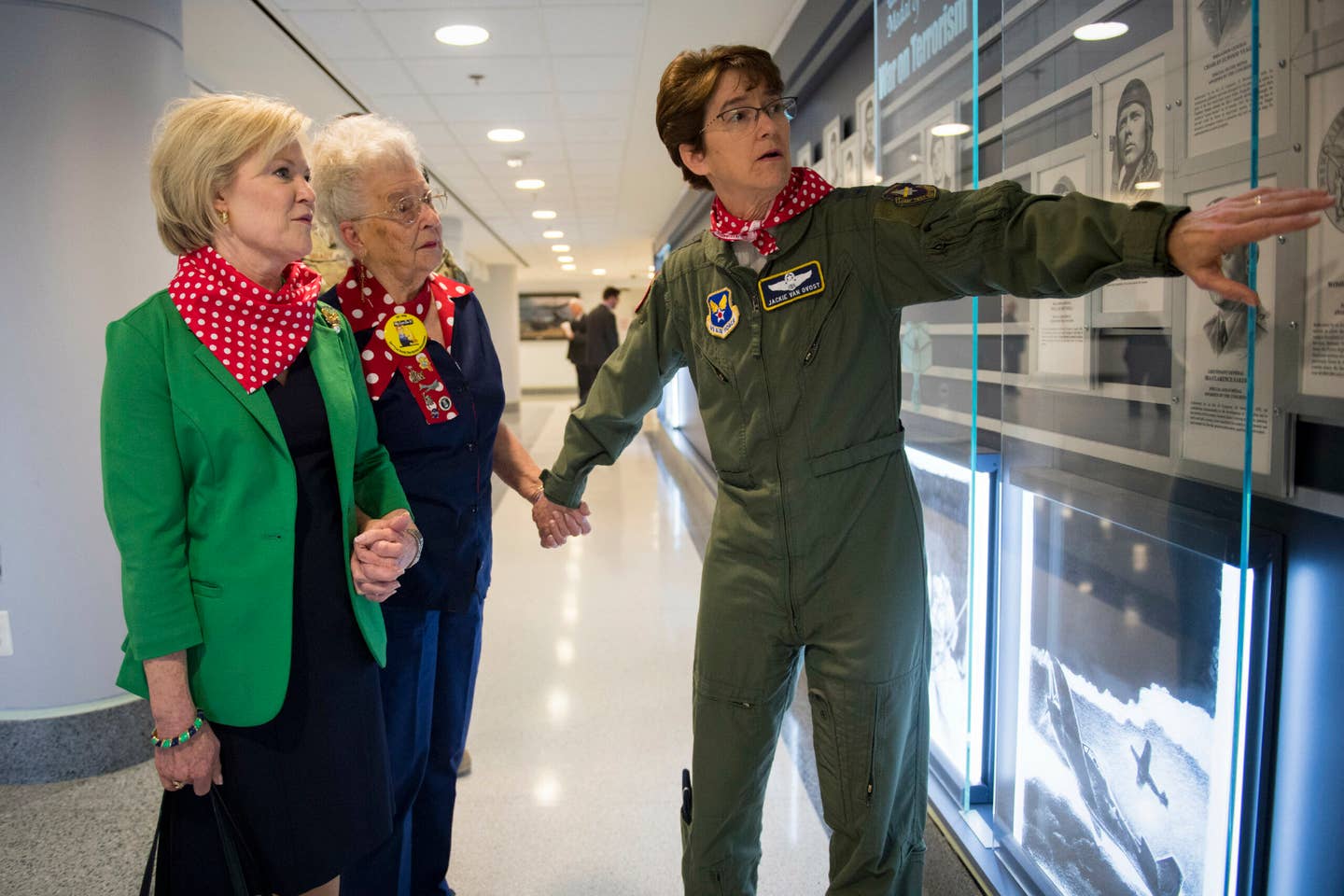
U.S. Air Force Gen. Jacqueline D. Van Ovost, gives Ms. Mae Krier an original Rosie the Riveter a tour of the Pentagon on Mar. 20, 2019. [File photo: U.S. Air Force]
Editor’s Note: This article is part of a month-long series to mark Women’s History Month: March 1: Pioneers of Women’s Aviation | March 2: Carole Hopson | March 4: Martha King | March 8: Association for Women in Aviation Maintenance | March 11: The Air Race Classic | March 15: Sisters of the Skies | March 18: Women in Aviation Conference | March 22: Bonny Simi of Joby Aviation | March 29: The First Graduating Class of Air Force Female Pilots | March 31: Top Female Difference Makers in Aviation
As we've documented throughout Women's History Month 2022, despite navigating the challenges of a male-dominated space, women are achieving great things in and for the aviation industry. Our final spotlight for this month shines on the women who make decisions every day that help shape the industry in many different sectors.
Apart from celebrating their amazing accomplishments, we hope that this list serves as inspiration for young women who might be just starting their aviation careers. We hope that this list lets them know that if they reach for the top, they can, in fact, change the world.
Cargo: Sarah C. Rhoads, Vice President, Amazon Global Air
After putting together a prolific 12-year military career as a U.S. Navy F-18 pilot, Sarah Rhoads didn’t expect that her next campaign would be to help Amazon (NASDAQ: AMZON) create a juggernaut air cargo network.
“I was a bit surprised when Amazon first contacted me as I had initially focused on pursuing a more traditional path of a transitioning military pilot,” Rhoads said in a company blog in 2016.
Rhoads admitted to an audience at the 2020 National Governors Association Winter Meeting that even she was caught off guard by how quickly Amazon built up its air cargo network. The company's fast rise into air cargo essentially mirrored her ascent there.
“When I first joined Amazon nine years ago, it certainly wasn’t a thought that an e-commerce company would be building an air haul network,” Rhoads said.
By the time she spoke at the conference, the Montana native shared that she’d lived in 11 states, and her LinkedIn profile shows she’s completed stints for the company in London and Wales. Starting with Amazon as a regional director of operations, by 2017, Rhoads was appointed the director of Amazon Air, which evolved in 2019 into her current role as vice president of Amazon Global Air. That’s not the usual career trajectory of someone with a mechanical engineering degree from the U.S. Naval Academy, but based on the outcomes she’s achieved for Amazon, Rhoads is clearly well placed.
Today, Amazon Air operates a fleet of 97 airplanes, including ATR 72s and Boeing 737s and 767s, which it operates through partners. In 2020, when air carriers all over were grounded by vanishing passenger demand resulting from the pandemic, Amazon launched new gateway operations in Richmond, Virginia; San Juan, Puerto Rico; Austin, Texas; Maui and Kona, Hawaii; Los Angeles, California; and New Orleans, Louisiana, and regional hubs in Lakeland, Florida; Rockford, Illinois; and Baltimore, Maryland. And during this same timeframe, while Europe was closed off to the world because of stringent border restrictions, the company launched a new state-of-the-art facility at the Leipzig-Halle Airport (EDDP) in Germany.
In August 2021, Rhoads announced the company had begun operating out of its new air hub at Cincinnati Northern Kentucky International Airport (KCVG), a $1.5 billion investment spanning 600 acres.
Rhoads has been present for each successive step forward, which is why in 2018, Air Cargo World named her its Air Cargo executive of the year.
It’s hard to predict how vast Amazon’s Air Cargo network will become, but the broader cargo industry is certainly on notice with Rhoads at the helm.
Business: Phebe Novakovic, CEO, General Dynamics
If you listen to quarterly earnings calls for the 500 highest grossing companies, you won’t hear many female voices leading the reports and fielding questions from analysts and reporters. In fact, when you narrow that list down to companies in the aviation and aerospace sectors, chances are you’ll only hear one female voice: Phebe Novakovic, CEO of General Dynamics (NYSE: GD).
Apart from those appearances, she doesn’t accept many interviews, perhaps from the insights she gained in her previous roles at both the Central Intelligence Agency and the Department of Defense. Rest assured, however, when she speaks, people listen.
Since 2012, Novakovic has presided over General Dynamics businesses that also include marine, missile, combat, information systems, and more. With General Dynamics ownership of Gulfstream, she’s also privy to bringing to market some of the most in-demand business jets. In the 2021 end of year earnings call, Novakovic celebrated Gulfstream’s most prolific year since 2008, amid strong demand from new operators.
Altogether, this may explain why Forbes consistently recognizes Novakovic in its annual list of The World’s 100 Most Powerful Women.
Airlines: Joanna Geraghty, President and COO, JetBlue
In 2018, Joanna Geraghty became the president and COO at JetBlue Airways (NASDAQ: JBLU), making her the highest-ranking female executive in the U.S. airline industry. In her role, Geraghty is responsible for JetBlue’s operations and commercial performance including network, brand and marketing, and revenue management.
It’s not the typical career track for a trained lawyer, and former law partner from the prestigious Holland & Knight firm, but it's in the vicinity of where she began at the then up and coming airline when she joined in 2005 as director of litigation and regulatory.
Since then, New York’s hometown airline has established its footprint throughout the northeastern U.S., the Caribbean, Latin America, and more recently, the U.K. Along the way, Geraghty had personal triumphs in multiple executive and vice president roles, including general counsel, people officer, and customer experience, before becoming only the second woman to run a major U.S. airline.
She’s helped the airline navigate the pandemic, especially given its location in New York City—one of the places hit hardest by COVID-19. Elsewhere, Geraghty has advocated for initiatives to expose more young people, especially girls, to the aviation industry and jobs as pilots.
Military: Jacqueline Van Ovost
U.S. Air Force Gen. Jacqueline D. Van Ovost is the 14th commander of U.S. Transportation Command (USTRANSCOM), one of 11 combatant commands in the Department of Defense. In 2021, she became the Defense Department’s only four-star female general, and the fifth in Air Force history, during a ceremony at Scott Air Force Base in Illinois. When she joined the Air Force 32 years ago, Ovost didn’t expect that she’d climb this far, especially since she failed her first physical fitness test because she couldn’t complete the required number of pull-ups.
“Standing in the stadium, in 1988 at the Air Force Academy, about to throw my hat in the air, I never would have thought I [would become] a four-star,” Van Ovost said in Air Force Magazine.
Instead, she said she’d work hard to be the best pilot she could be. Over three decades, she flew more than 4,200 hours, piloting 30 different aircraft. When she initially tried to join, the Air Force wasn’t looking for female fighter pilots. She had to work her way up, a journey that began with flying the C-141 Starlifter before achieving her long-term desire to be a test pilot of whatever aircraft the Air Force would allow her to fly.
Now, in her new role, Van Ovost wants to make the Air Force a more attractive place to serve for diverse groups of people. In her interview with Air Force Magazine, she spoke about tangible changes the organization can make to attract women, such as changing flight gear and uniforms, creating a more accommodating fitness schedule and pregnancy programs, and easing old restrictions that are irrelevant.
She’s also laser focused on bringing the KC-46 Pegasus—a Boeing 767 turned re-fueler—into full initial operational capability, and accelerating the use of new technologies, like virtual reality, to assist the command with missions and training.
Government: Jennifer Homendy, NTSB Chair
In August 2021, Jennifer Homendy took her oath as chair of the National Transportation Safety Board (NTSB), becoming the fourth woman to lead the agency, and the 15th chair in its history.
Her role isn’t a simple one—she’s responsible for ensuring safety across all modes of transportation, aviation being just one. Thankfully, she’s leaning into the challenge and has the skills and experience to lead the board in its important work.
In her swearing in ceremony, Homendy shared, “We are in a time of dynamic change and growth within transportation—from automated vehicles to commercial space. This means that our mission to prevent tragedies and injuries and save lives is even more critical. The country needs a robust and energetic NTSB to ensure safety is well represented in all modes of transportation. I look forward to supporting our outstanding staff and their work as we endeavor to make transportation safer for all.”
Homendy’s experience, which includes work as a union official, as the Democratic staff director for the House Subcommittee on Railroads, Pipelines, and Hazardous Material, and as a member of the NTSB, should serve her well as head of the independent safety board.
As a member of the NTSB since 2018, Homendy participated on the board’s investigation response team that uncovered the causes of the May 2019 midair collision of two aerial tour aircraft in Alaska; the June 2019 skydiving aircraft accident in Hawaii; and the January 2020 helicopter crash that killed Kobe Bryant and eight others.
Prominently, in the Kobe Bryant crash, she charged the FAA with failing to act on previous NTSB recommendations to improve safety systems. Specifically, on the NTSB’s most wanted list for aviation are safety management systems for all revenue passenger operations, and crash-resistant recorders and flight data monitoring programs.
With the latest wave of innovation, including the integration of electric vertical takeoff and landing (eVTOL) aircraft and unmanned aircraft systems into the National Airspace System, there will be plenty of new safety challenges for Homendy and the NTSB. This unique time in history and Homendy’s leadership experience place her in a position to make a difference for the industry.

Subscribe to Our Newsletter
Get the latest FLYING stories delivered directly to your inbox

